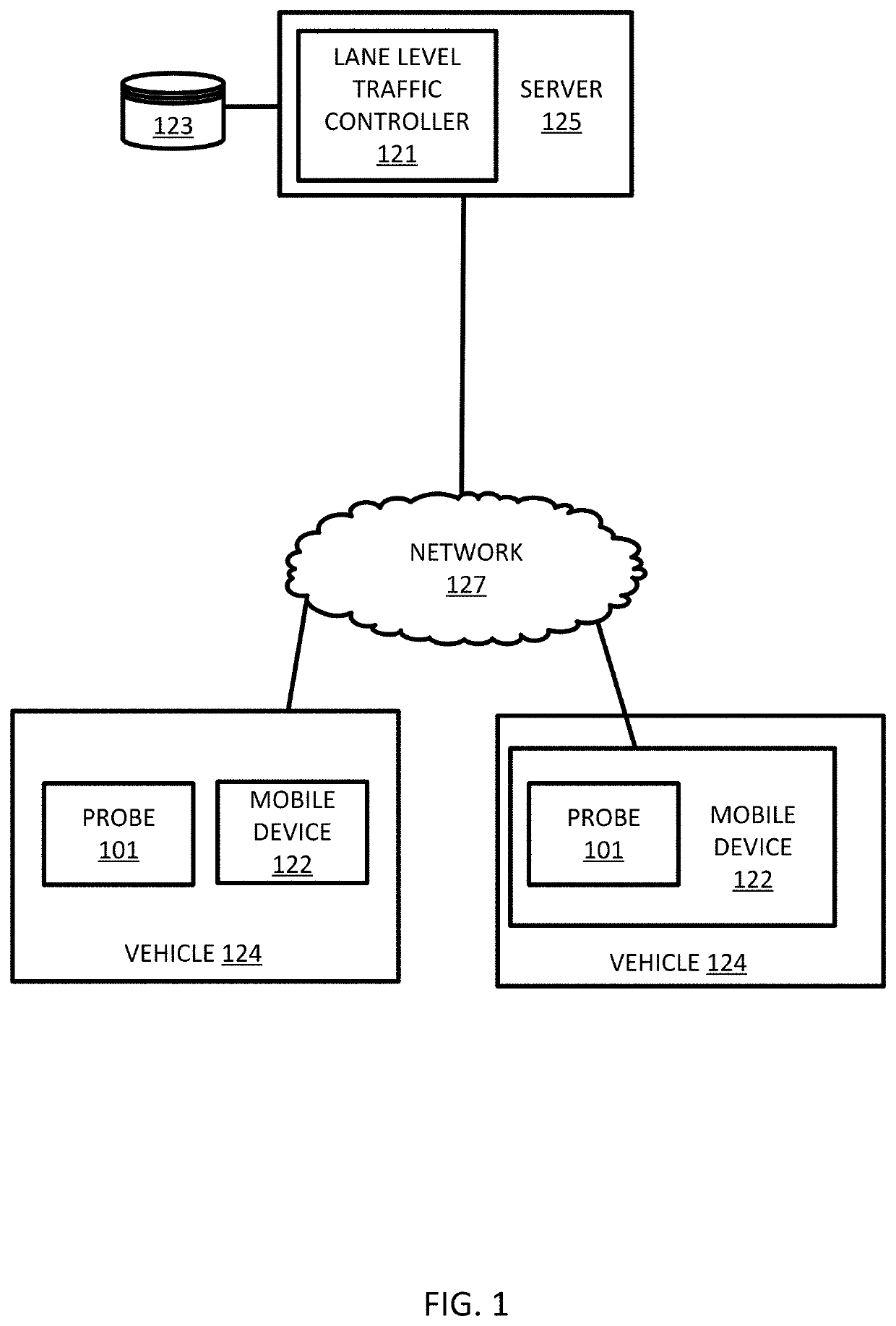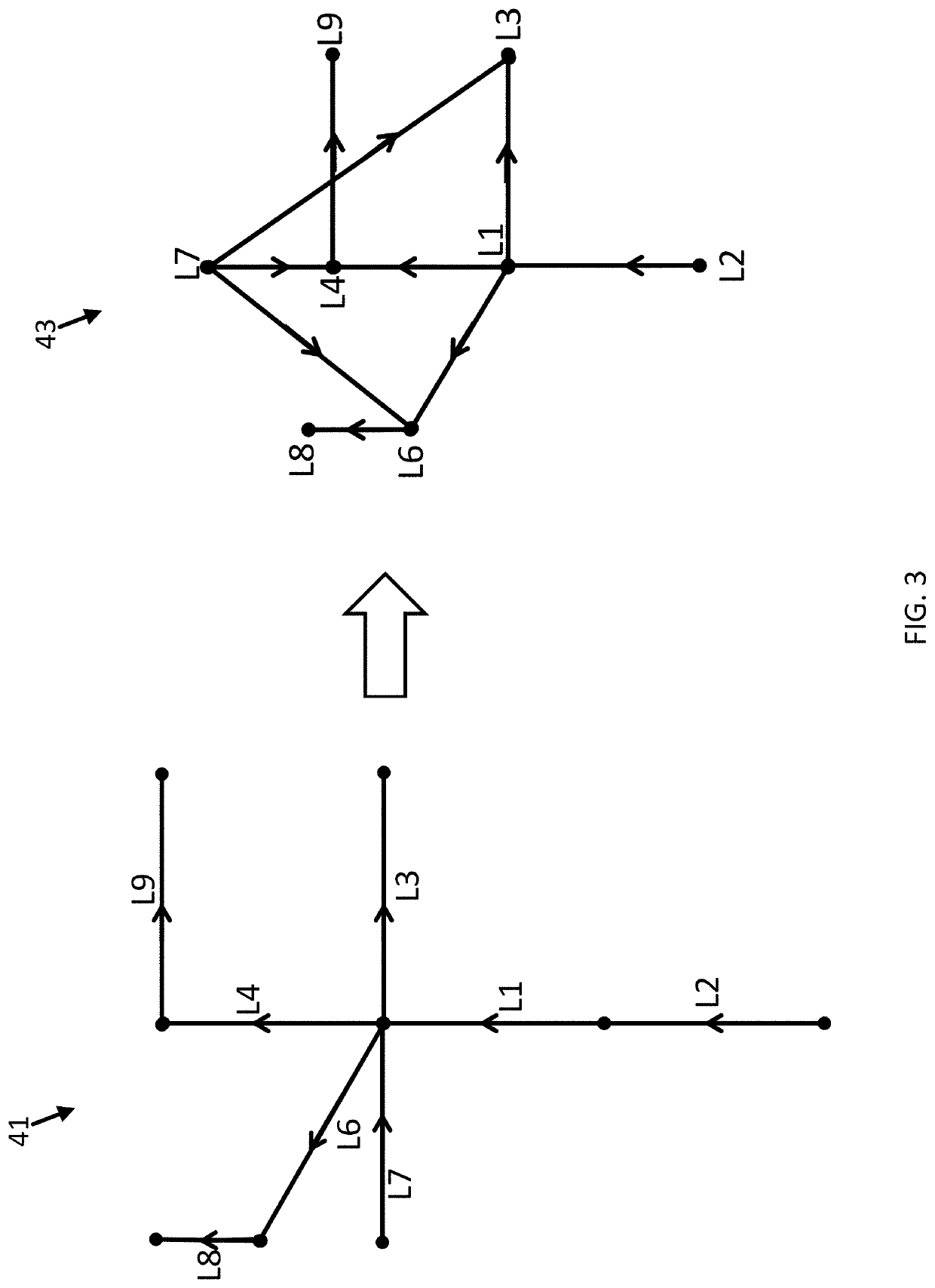Traffic predictions at lane level
a technology of traffic prediction and lane level, applied in the field of traffic prediction, can solve the problems of large difficulty in short-term traffic prediction, high cost of measuring traffic volume, and high cost of installing and maintaining sensors
- Summary
- Abstract
- Description
- Claims
- Application Information
AI Technical Summary
Benefits of technology
Problems solved by technology
Method used
Image
Examples
embodiment 1
[0136]A method for predicting future traffic for a roadway, the method comprising:[0137]receiving road network data in a first road network format describing a road network including a plurality of road links and a plurality of intersections, wherein the first road network format includes graph edges for the plurality of road links and graph nodes for the plurality of intersections;[0138]converting the road network data to a second road network format describing the road network, wherein the second road network format includes graph edges for the plurality of intersections and graph nodes for the plurality of road links;[0139]selecting a road link from the plurality of road links;[0140]calculating a related link subset from the plurality of road links for the selected road link;[0141]querying historical data for the related link subset; and[0142]calculating a predicted traffic level for the selected road link in response to the historical data for the related link subset.
embodiment 2
[0143]The method of embodiment 1, further comprising:[0144]identifying a multi-lane road link including a plurality of lanes with at least one lane upstream of the selected road link, the at least one lane connected to the selected road link in the second road network format.
embodiment 3
[0145]The method of embodiment 1 or 2, further comprising:[0146]receiving position data from a mobile device; and[0147]matching the multi-lane road link to the position data.
PUM
 Login to View More
Login to View More Abstract
Description
Claims
Application Information
 Login to View More
Login to View More - R&D
- Intellectual Property
- Life Sciences
- Materials
- Tech Scout
- Unparalleled Data Quality
- Higher Quality Content
- 60% Fewer Hallucinations
Browse by: Latest US Patents, China's latest patents, Technical Efficacy Thesaurus, Application Domain, Technology Topic, Popular Technical Reports.
© 2025 PatSnap. All rights reserved.Legal|Privacy policy|Modern Slavery Act Transparency Statement|Sitemap|About US| Contact US: help@patsnap.com



